I use a lot of terms that might be unfamiliar in my posts and videos, so I thought I’d go through some tennis nerd terminology.
If there are terms that you wonder about, please let me know in the comments and I will expand on this post and create a video about it too. These were the ones that were at the top of my head when it comes to tennis nerd terminology.
Launch angle
The way the ball shots off from the string bed when you hit it. A high launch angle means it shoots up higher with better potential of clearing the net, but the possible downside is a lack of control. You get a higher launch angle with poly strings and lower with gut, syn gut and multifilament strings.
Plow-through
Some of these are self-explanatory. This is the sensation of the racquet plowing through the ball like an unstoppable force. It’s usually connected to a healthy mass/swing weight.
Tweener:
In many of my videos, I use the expression of Tweener racquet. I don’t really think it’s that valid anymore and it stems from an older way of categorizing racquets. This is how Tennis Warehouse used to describe different racquet categories:
Power or Game Improvement racquets: (107-135 sq in, light weight (8-9.5 oz), often (but not always) on the stiffer side. Made for beginners to lower-level intermediate players.
Tweener racquets 95-102 sq inches, 9-5-11 oz, low-medium to medium-high power and for intermediate to advanced players.
Control or Player’s Racquets: Denotes racquets that would be used by professional and high-level club and college team players. (11.5-13+ ounces), (85-98 sq in), thinner, more flexible beams and are balanced head light to retain maneuverability.
Tennis has changed since these descriptions were made. Few players use anything below a 95 sq inch racquet today. The midsize (85-90 sq inches) racquets are pretty much extinct and even 95 sq inch frames are pretty rare. The most common racquet sizes overall are 98-100 sq inches.
Plush
When a racquet is “plush” it’s often connected to a lower stiffness rating and a “softer feel”. This is typical for more old-school racquets ranging from 90-95 sq inches and not so common today with bigger head sizes and higher stiffness ratings.
Springy
If the string bed of the racquet is described of as “springy” it means that it can feel inconsistent and sometimes lack control.
Swing weight
This definition is straight from TWU. Swingweight is a measurement of a racquet’s resistance to being rotated about an axis going through your hand. A low swingweight makes it easy for the player to swing the racquet (maneuverable). But it also makes it easy for the ball to move the racquet, resulting in loss of power.
In short, swing weight describes how heavy the racquet feels to swing. The unit of measurement is kilogram centimeter squared (kg-cm2), but it’s often referred to simply as swingweight units.
Solid/Stable
When I descibe a racquet as solid, it means it’s stable and feels like it won’t be pushed around by the opponent’s shots.
Stiff/Stiffness
Stiffness is measured in RA, where anything below 60 is seen as flexible and anything above 67 is seen as stiff (strung). The RA strung is generally 3 pts lower than unstrung because when you add strings, the frame becomes more flexible.
Sweet Spot
The optimal area of the string bed where you get max power when you hit the ball (it will also offer the optimal comfort and sound from the racquet). Some racquets offer a larger sweet spot, but sometimes a smaller sweet spot can give you the feeling of more control. This can also be described as sweet area.
Open string pattern
When a string pattern is described as “open” it means that the string spacing is relatively wide and the “holes” in the string bed are quite large. This will often create more of a launch angle which can impact spin potential positively.
Beam width
The thickness of the racquet. A thinner beam usually means a softer response and less power, while a thicker beam means a stiffer racquet and more power.
Head-Light Balance (or Head-Heavy balance)
When a racquet is described as head-light, it means it has more weight in the handle. A head-heavy balance refers to more weight in the head. You measure the balance of a racquets in pts of HL or HH or just in centimeters/millimeters. See the below table.
| Points | Inches | Centimeters |
|---|---|---|
| 0 | 13.5 | 34.290 |
| 1 | 13.375 | 33.973 |
| 2 | 13.25 | 33.655 |
| 3 | 13.125 | 33.338 |
| 4 | 13 | 33.020 |
| 5 | 12.875 | 32.703 |
| 6 | 12.75 | 32.385 |
| 7 | 12.625 | 32.068 |
| 8 | 12.5 | 31.750 |
| 8.5 | 12.4375 | 31.591 |
| 9 | 12.375 | 31.433 |
| 10 | 12.25 | 31.115 |
| 11 | 12.125 | 30.798 |
| 12 | 12 | 30.480 |
| 13 | 11.875 | 30.163 |
Twist weight
Twist weight determines how much force is required to twist the racket around the long axis of the racket. If a racquet has a high twist weight, it often means it is stable as a rock when pushing through on the shot, but lacks maneuverability which can influence spin potential negatively. Oversize racquets usually have the highest twist weight scores. If you want to dive deeper into twist weight, this article is something for the hardcore nerds.
Check some racquet twist weights here
I have written about twist weight and swing weight before.




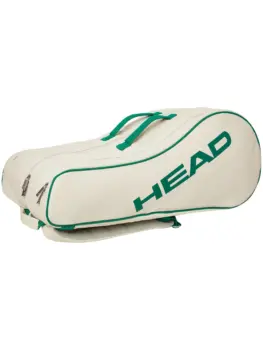

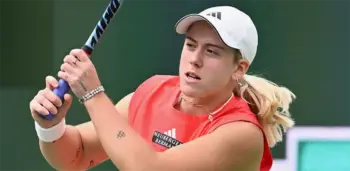

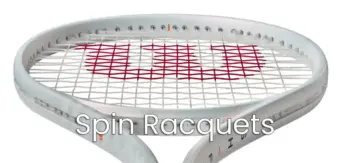


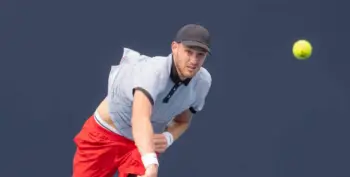
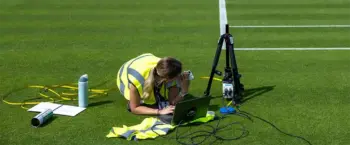

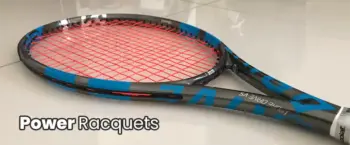

Balance Point of course depends on the length of the racquet being balanced. The table assumes a 27″ frame. There are frames that are slightly to considerably longer than 27″. And what we learned from the Fabian-Parnell podcast is that racquets can shorten after stringing, making a tape measure an important but often overlooked tool for stringers.
Thanks for the helpful glossary. Another thing to add might be terms used for beam and throat shape (box beam vs oval beam vs ???). I’m still not sure why some of the Technifibre racquets you recently reviewed are described as having “R-shaped” throats.
Nice overview of the basics tennis terms. Honestly – I’ve been looking for these explanations for a long time somewhere but nowhere to find so I had to learn them from the tennis videos and reviews by myself. This can definitely help a lot to the people that were in similar situation like I was months back.